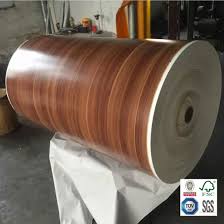- Home
- Comprehensive Guide to Duplex Paper Pricing and Supplier Options for Your Needs
Aug . 03, 2024 02:21 Back to list
Comprehensive Guide to Duplex Paper Pricing and Supplier Options for Your Needs
Understanding Duplex Paper and Its Price Fluctuations
Duplex paper, renowned for its versatility and dual-sided printing capabilities, has become a staple in various industries, including packaging, publishing, and stationery. Its unique construction, featuring a gray cardboard layer sandwiched between two outer layers, provides an excellent surface for printing while retaining structural integrity. As demand for duplex paper continues to rise, understanding the factors affecting its pricing is crucial for both suppliers and consumers.
What is Duplex Paper?
Duplex paper is characterized by its smooth surface on both sides, making it ideal for high-quality printing. The exterior layers can be coated or uncoated, depending on the desired finish, while the inner layer generally boasts a grayish hue that enhances opacity. This design not only provides excellent print results but also ensures that colors appear more vibrant when printed, as the inner layer prevents show-through, making it popular for packaging and promotional materials.
Factors Influencing Duplex Paper Prices
1. Raw Material Costs The primary component of duplex paper is wood pulp, which is subject to fluctuations in price based on various factors, including timber availability, environmental regulations, and global demand for paper products. Changes in the cost of raw materials directly impact the end price of duplex paper, making price lists from suppliers essential for manufacturers and consumers alike.
2. Production Process The complexity of manufacturing duplex paper can also influence its price. The production involves several steps, including pulping, refining, and coating. Any increases in energy costs, labor rates, or technological advancements can lead to price adjustments as suppliers strive to maintain profitability while meeting quality standards.
duplex paper price list suppliers

3. Market Demand and Supply The demand for duplex paper is closely linked to market trends and consumer preferences. As e-commerce and packaging industries grow, so does the need for duplex paper. Conversely, when the demand decreases, such as during economic downturns, prices may drop as suppliers seek to increase sales. Seasonal trends also play a role; for instance, holiday seasons might see a spike in demand for packaging materials, affecting pricing.
4. Quality and Specifications Duplex paper comes in various grades and specifications, catering to different applications. Higher-quality duplex paper with better printability and durability will naturally command higher prices. Consumers must weigh the benefits of using premium products against their budget constraints.
5. Supplier Dynamics The pricing of duplex paper can vary significantly between suppliers due to their negotiation power, market positioning, and additional services offered. Some suppliers may provide volume discounts, tailored prices for long-term contracts, or integrated logistics solutions, adding complexity to the price landscape.
Navigating the Price Lists
For businesses looking to source duplex paper, understanding price lists from various suppliers is paramount. By comparing rates, quality, and services, companies can make informed purchasing decisions that align with their operational needs and budgetary constraints. Regularly monitoring market trends and price comparisons can lead to long-term savings and efficiencies.
Conclusion
The world of duplex paper pricing is influenced by a multitude of factors, from raw material costs to market dynamics and production processes. As businesses continue to seek quality printing solutions, suppliers will need to navigate these complexities to offer competitive prices. For consumers, being informed about these variables can lead to better purchasing decisions, ensuring they receive the best value for their investment in duplex paper. As the industry evolves, staying abreast of price trends and supplier dynamics will be essential to thriving in the competitive marketplace.
Latest news
-
High-Quality Bathroom Cabinet Contact Paper – Durable & Stylish Leading Suppliers, Exporters, Manufacturers
NewsJul.08,2025
-
Premium Wood Contact Paper for Desk – Reliable Suppliers & Exporters
NewsJul.08,2025
-
Premium Contact Paper for Table Top – Durable & Stylish Surface Solution from Leading Manufacturer
NewsJul.07,2025
-
Duplex Board with Grey Back - Reliable Supplier & Competitive Price Manufacturer & Exporter
NewsJul.07,2025
-
Premium White Contact Paper on Cabinets – Trusted Exporters & Suppliers
NewsJul.06,2025
-
High-Quality Duplex Board Packaging for Food Reliable Manufacturer & Supplier
NewsJul.06,2025

